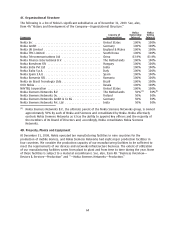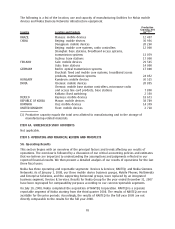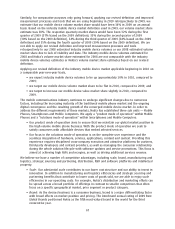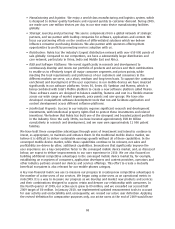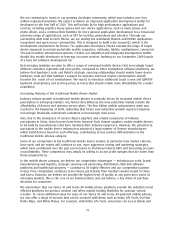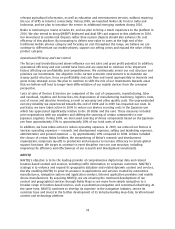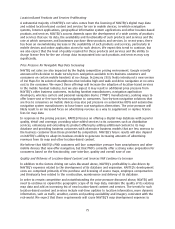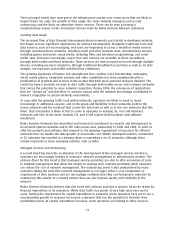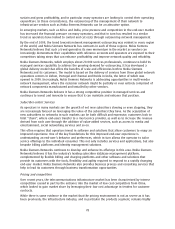Nokia 2009 Annual Report Download - page 71
Download and view the complete annual report
Please find page 71 of the 2009 Nokia annual report below. You can navigate through the pages in the report by either clicking on the pages listed below, or by using the keyword search tool below to find specific information within the annual report.been 62 million, and our target for the first half of 2010 is to reach 115 million active users. We
continue to target 300 million active users by the end of 2011.
Our Devices & Services net sales and profitability are currently driven primarily by the following
factors and trends:
• Convergence of the mobile device industry with the Internet and personal computer industries;
• Consumer purchasing decisions which are increasingly driven by the user experience;
• Competitive ecosystems which are developing in the converged mobile device market;
• Increasing maturity of the traditional mobile device market; and
• Operational efficiency and cost control.
Convergence of the Mobile Device Industry with the Internet and Personal Computer Industries
A new industry is being formed from elements of the mobile handset industry, the Internet industry
and the personal computer industry. The media and content that were previously accessible on the
Internet only through personal computers are now increasingly available for consumption on mobile
devices. This has opened up new opportunities to create value for consumers through innovative new
services offerings and user experiences. Many of these innovations are primarily softwaredriven.
Companies with software expertise have been able to quickly bring innovations to market that make
the underlying hardware capabilities of converged mobile devices easier for consumers to use.
The growth potential offered by the converged mobile device market has attracted new entrants,
from the personal computer industry and from the internet industry, as well as from adjacent
industries. Some of our competitors have entered the mobile device market with a highend,
vertically integrated offering supported by a large number of applications that are distributed through
their proprietary application store. By focusing on this lucrative highend, high margin segment,
creating an applications ecosystem and offering consumers a modern, easy to use interface, these
competitors have been able to quickly capture industry value share, particularly in developed markets.
Some other competitors have entered the mobile device market with a new operating system, which
enables handset manufacturers that do not have substantial software expertise to develop mid to
highend converged mobile devices that feature a certain user interface and application developer
ecosystem. The new competitors may also distribute cobranded devices developed together with so
called white label manufacturers. Our new competitors relying on business models customary in
businesses converging with the mobile communications business, such as online advertising, may
have opportunities and offerings in the converged mobile device market which may not be
customarily available or possible for the traditional competitors in the mobile communications
market. Further, our new competitors may also leverage their software expertise to continuously
bring new innovations to market at a rapid pace, faster than typical hardware development cycles.
The growth potential in the converged mobile device market has also resulted in intense consumer
and media attention. This attention may also be a contributing factor to the higher growth rate of
this market segment compared to the traditional mobile device market.
Nokia is the world leader in the converged mobile device market by volume market share, and the
convergence trend continues to provide new opportunities for Nokia to create and capture value.
Nokia believes it has the potential to deliver user experiences that previously were only available
through personal computers. In fact, in many parts of the world, especially in emerging markets, we
expect consumers’ first Internet experience will be through a mobile device, as opposed to a personal
computer. Whereas the industry convergence has been focused on the highend of the market thus
far, we believe there is strong consumer demand for rich user experiences at all price points and in all
markets globally. These experiences will need to be localized in terms of content as well as pricing
and distribution. Furthermore, Nokia endeavors to go beyond just offering traditional Internet
capabilities. By leveraging the inherent social network and location awareness of mobile devices, we
69







